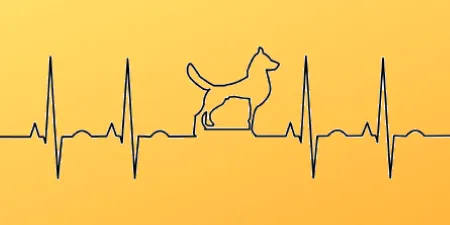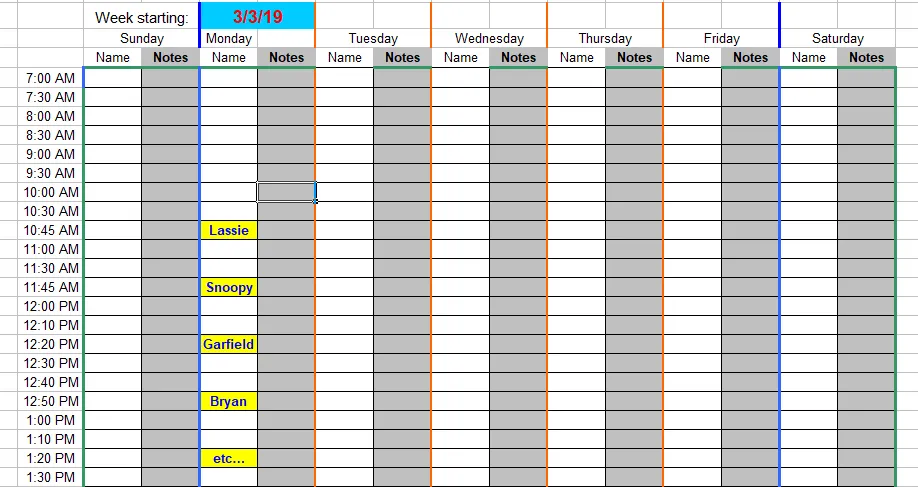For many, the thought of working with animals is a dream come true, and professional dog walking offers a fulfilling path for those with a genuine passion for pets. However, transforming that passion into a successful service requires more than just loving dogs; it demands a specific set of Skills For Dog Walking. Whether you’re aspiring to become a professional dog walker or an owner seeking the best care for your beloved companion, understanding these critical competencies is paramount. This guide will delve into the practical, mental, physical, and managerial abilities essential for excelling in this field and what discerning owners should look for when entrusting their pets to others. If you’re considering a career in this rewarding industry, it’s wise to [start your own dog walking business](https://dogcarestory.com/start-your-own-dog-walking-business/) with a solid understanding of these foundational skills.
Key Skills for Professional Dog Walkers
Becoming a successful dog walker is not just about logging miles; it’s about being observant, proactive, and genuinely committed to the well-being of the animals under your care. While experience with animals is invaluable, particularly owning a dog, many other attributes contribute to becoming a top-tier walker. These skills can be broadly categorized into mental, physical, and managerial, all working in tandem to ensure a safe and positive experience for every dog.
1. Keen Observational Skills: Recognizing Behavioral Changes
Among the most critical skills for dog walking is the ability to recognize changes in a dog’s behavior. This only becomes possible once you are familiar with the dog’s usual demeanor. When walking a new dog, pay close attention to any unusual behavior, which could be a unique quirk or a sign of discomfort. It’s crucial to proceed slowly during the first week, noting everything the dog does. While many dogs are inherently happy, others might display fear until they build trust. For these dogs, a balance of control and freedom on walks can help foster confidence.
For regular clients, noticing subtle shifts is easier. Promptly inform owners via text if you suspect a problem, or leave a detailed note. Responsible owners often communicate issues beforehand, but your keen eye can bring unexpected concerns to their attention. Remember, your compensation reflects your skills and experience, not merely the act of walking.
 A dog attentively watching its owner during a walk, highlighting focus and connection.
A dog attentively watching its owner during a walk, highlighting focus and connection.
2. Vigilance for Physical Health: Spotting Ailments and Emergencies
Complementing behavioral observation is the skill of recognizing physical changes, health issues, or potential medical emergencies. Over time, experienced walkers learn to identify signs such as limping, lethargy, vomiting, or blood in urine or stool. Every day, you’ll become familiar with a dog’s typical reaction when you arrive – usually excitement. If a dog seems off, it indicates a change, even if minor. Always consider leaving a note, and in serious cases, inform the owner immediately.
One common issue involves dogs ingesting inappropriate items. A dog once ate food wrapped in tin foil, requiring the owner’s immediate attention. In another instance, a dog swallowed a sock, necessitating a quick response. Knowing basic first aid, like inducing vomiting with hydrogen peroxide (under owner’s guidance and vet consultation), can be life-saving and save owners considerable expense. While some problems are routine, like a dog limping, always communicate and follow up to ensure the dog’s well-being.
3. Equipment Acuity: Noticing Faulty Gear
Ensuring the dog’s safety begins with proper equipment. During your initial meeting with a client and their dog, always confirm that the harness or collar fits correctly and is easy to put on. This attention to detail not only demonstrates your professionalism but is also vital for preventing escapes. A poorly fitting harness or a broken buckle can lead to a dog slipping out, especially on their first walk with you.
It’s also essential to inspect equipment for wear and tear. A broken or worn strap, or a faulty buckle, might not be immediately obvious until you hear or feel something amiss. For example, a quick-release buckle that doesn’t sound right could have a hidden crack. In such situations, having a backup plan, like attaching the leash to both the collar and a harness (a useful feature of some harnesses like the Easy-Walk), can ensure the dog’s safety until the owner can replace the faulty gear.
4. Problem-Solving Prowess: Thinking Outside the Box
Unexpected challenges are an inevitable part of dog walking, and the ability to think creatively “outside the box” is a non-negotiable skill for dog walking. Imagine arriving for a pet-sitting visit only to find the leash missing, with the owner away for the weekend. In such a scenario, resourcefulness becomes key. An experienced walker once used their belt as a temporary choke collar to ensure the dog could still get its walk, later using one of their own leashes. Often, a “lost” leash is simply in the owner’s car.
While specific examples may not directly prepare you for every unique situation, the core principle remains: prioritize the dog’s safety while devising a solution. You will undoubtedly encounter situations unique to your experience. Cultivating your wits to troubleshoot problems effectively and safely is a continuous learning process in this profession.
 A dog looking curiously at its handler, demonstrating the importance of understanding canine expressions.
A dog looking curiously at its handler, demonstrating the importance of understanding canine expressions.
5. Canine Communication: Reading Body Language and Projecting Confidence
A perfect dog walk is rare, often involving ideal weather and no mishaps. While you can’t control the weather, you can control how you manage the walk. A primary goal is to avoid delivering bad news to owners, and while major problems are infrequent, being prepared is crucial. One significant concern is an attack by another dog. As a professional, you become intimately aware of this risk, having walked aggressive dogs, encountered them, and perhaps even had your own dog attacked.
Learning to identify and avoid potentially problematic dogs is a key skill for dog walking. This may involve crossing the street or changing your route to ensure the safety of the dog in your care. Furthermore, if you are walking a dog known to be aggressive, communicating confidence and control through your own body language is vital. For more insights on handling various canine temperaments and techniques, consider a [dog sitter trainer](https://dogcarestory.com/dog-sitter-trainer/) to enhance your skills.
6. Agility and Alertness: Having Quick Reflexes
There are moments during a dog walk that demand immediate and decisive action. Quick reflexes are among the essential skills for dog walking. Sometimes, a leash might be dropped, especially with dogs that don’t heel or tend to circle the walker. Being able to instantly step on the leash can prevent a runaway situation. While owners of challenging dogs might worry, professionals take precautions and handle leashes with extreme care in such cases.
Beyond dropped leashes, quick reactions are necessary to pull a dog away from various dangers. This includes unexpected hazards around blind corners, irresponsible cyclists, or hazards on trash collection days. Being constantly alert to your surroundings and the dog’s proximity to potential threats is crucial for maintaining safety.
7. Empathy and Dedication: Patience and a Love of Animals
While some dogs are a joy to walk, others will undoubtedly test your patience. These challenges often stem from a lack of training. However, remember that you are hired to walk dogs, and compared to many other occupations, dealing with a difficult dog can still be a rewarding experience. A true professional finds the positives in every dog, no matter how challenging, and works through the difficulties. If you lack genuine patience and a deep love for animals, this profession may not be the right fit.
Adopting a dog yourself can further enhance your dog-walking skills. It not only provides invaluable personal experience in caring for an animal but also offers opportunities to meet potential clients while walking your own pet. Your vet or groomer can also serve as excellent first references. Pets bring immense happiness, and personal ownership deepens your understanding of canine needs.
 A happy dog being walked on a leash outdoors, signifying the joy and connection of pet ownership.
A happy dog being walked on a leash outdoors, signifying the joy and connection of pet ownership.
8. Physical Preparedness: Maintaining Stamina
Dog walking is a physically demanding job, requiring significant stamina. An average weekday might involve walking 3-4 miles, accumulating 15-20 miles per week, not including personal dog walks or weekend excursions. Add to this the challenge of walking in extreme weather conditions – snow can be incredibly tiring, while extreme heat saps energy.
Therefore, good physical health is a fundamental requirement. Unless you exclusively walk small or exceptionally well-trained dogs, you cannot sustain a career as a dog walker if you are in poor health. This physical aspect is a core component of the necessary skills for dog walking.
9. Advanced Leash Handling: The Behind-the-Back Hand-off
A more specialized, yet incredibly useful, skill for dog walking is the “behind-the-back leash hand-off.” This technique helps manage dogs that frequently walk behind you and then switch sides, which can cause you to trip or drop the leash.
- Situation #1: Single Dog Circling. If a dog constantly walks behind you and switches sides, you either have to do a 360-degree turn or transfer the leash behind your back. The hand-off is acceptable for small, non-pulling dogs. For stronger dogs, spinning is safer. A better solution is to shorten the leash to about three feet, preventing the dog from getting behind you.
- Situation #2a: One Dog Circles in a Multi-Dog Walk. When walking two dogs, and one circles, a 360-degree spin is impossible. In this scenario, you must perform the behind-the-back hand-off.
- Situation #2b: Both Dogs Circle in a Multi-Dog Walk. This indicates a significant training issue. You should either reconsider the client or work with the owner to improve the dogs’ leash manners. Shortening both leashes to keep dogs close to your legs is vital. Investing in a belt connection for leashes can also help. Encourage owners to train their dogs or consider using an
[Easy-Walk harness](https://fairmountpetservice.com/Blog/pet-services-blog/dog-walking/easy-walk-harness/).
10. Continuous Growth: Never Stop Learning
The world of dog care is dynamic, and experienced walkers often find themselves encountering new situations even after years in the field. Therefore, a crucial skill for dog walking is a commitment to continuous learning. Always make mental notes on how you handle difficult situations, strive to eliminate mistakes, and learn from those you do make, ensuring they are never major.
Engage with dog owners, participate in pet groups and forums, and consider starting a blog about your dog walking and pet sitting experiences. Researching articles for such a blog will expose you to various aspects of pet services and care, enriching your knowledge and expertise.
 A neatly organized weekly schedule for dog walks and pet sitting, displayed on a digital screen.
A neatly organized weekly schedule for dog walks and pet sitting, displayed on a digital screen.
11. Business Acumen: Essential Management Skills
Beyond the direct interaction with dogs, managing the operational aspects of a dog walking business is a vital, albeit less glamorous, skill. This includes setting up efficient scheduling software (even simple tools like Excel or Google Sheets can work), accurately calculating fees, collecting and recording payments, and communicating effectively with clients regarding holidays or rate adjustments.
As your business grows, you might consider hiring additional dog walkers and sitters. This introduces new management responsibilities such as creating job postings, conducting interviews, and overseeing employees. Networking with other dog walkers and pet sitters through groups and forums can provide invaluable support and advice for navigating these managerial challenges. For those managing a local service, understanding specific needs, like those of a [dog walker dartmouth](https://dogcarestory.com/dog-walker-dartmouth/), can be crucial.
What to Look For: Essential Skills When Hiring a Dog Walker
For dog owners, selecting the right person to care for your furry family member is a significant decision. The skills a professional dog walker possesses are directly relevant to what you should seek when entrusting your dog to their care.
1. Proven Track Record: Experience and References
When hiring a dog walker, experience, references, and reviews are paramount. If a prospective walker possesses these three elements, you likely don’t need to look much further. During the initial meeting, focus your questions on basic information: health concerns, behavioral issues, and details about the dog’s harness and leash. An experienced walker will demonstrate competence in these areas.
The value of online reviews and referrals from other dog owners cannot be overstated. Just as you might check reviews before an online purchase, seeking testimonials provides crucial insight. For new walkers, actively asking early clients to serve as references is a must until a body of online reviews can be built. If you’re looking for someone specific, searching for a [need a dog sitter near me](https://dogcarestory.com/need-a-dog-sitter-near-me/) often yields local references.
2. Safety and Capability: Insurance, Strength, and Stamina
Beyond experience, ensuring the safety and capability of a dog walker is crucial. Opt for a walking company that is bonded and insured. While many professional walkers may never need to involve their insurance company, having coverage for potential incidents like a broken lamp or other minor damages provides peace of mind.
Furthermore, consider your dog’s size and temperament. While small dogs are generally easy to manage, a dog weighing 60 pounds or more requires a walker with sufficient strength and physical stamina to handle them effectively and safely.
3. Focus on Core Competencies: What’s Not Essential
It’s important to understand that a dog walker doesn’t need to be an expert in every aspect of canine care, such as detailed knowledge of all dog breeds or advanced training methodologies. While some basic knowledge in various functional areas can certainly enhance their service, these are not the primary skills for dog walking.
For instance, a general understanding of breed-specific needs, such as knowing that brachycephalic dogs (flat-faced breeds) require shorter walks in hot weather, is helpful. Similarly, while professional training isn’t their advertised service, basic knowledge of how to [prevent dogs from pulling on the leash](https://fairmountpetservice.com/Blog/pet-services-blog/dog-walking/how-to-walk-dog-that-pulls/) can greatly improve walk quality. For more in-depth training resources, a [total recall dog training book](https://dogcarestory.com/total-recall-dog-training-book/) might be beneficial for owners.
Summary
The journey to becoming a successful dog walker, or finding an exceptional one, hinges on a core set of skills for dog walking. At its heart, invaluable experience with dogs, a constant prioritization of their safety, a strong sense of responsibility, and good physical fitness are the bedrock of this profession. For dog owners, the “Three R’s” are your best guide when seeking to hire a dog walker: Referrals, References, and Reviews. By understanding and valuing these essential skills, both walkers and owners can ensure a safe, enjoyable, and enriching experience for every dog.
